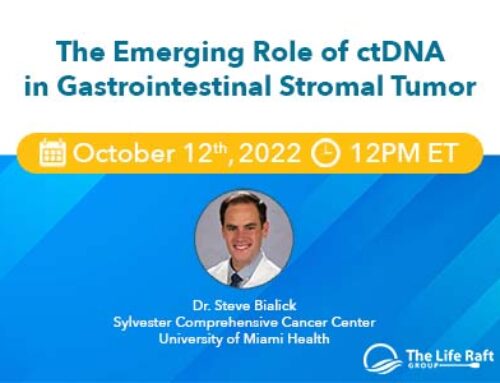NOTE: We have some specific information about some drugs on the “Drug Interactions” lists. When we have specific or detailed information about a drug interaction, it will appear on this page. Note that for the great majority of drugs we do not have any specific information beyond what is in the lists.
Acetaminophen (Tylenol)-
There has been some controversy regarding the safety of acetaminophen in patients treated with Gleevec. A CML patient in accelerated phase taking Gleevec together with high-doses of acetaminophen to treat fever died of hepatic (liver) failure. Another CML patient taking 400 mg of Gleevec and 500-1000 mg of acetaminophen per day also died of liver failure. Liver failure and death has also occurred in some patients taking Gleevec but not taking acetaminophen. Thus the contribution of acetaminophen to liver toxicity is not always absolutely clear. Many patients have taken these two drugs in combination safety. Nevertheless, caution is recommended, and patients should be advised to use acetaminophen in moderation.
In July of 2007, GIST experts made a specific recommendation in the NCCN Task Force Report on GIST management. Their comments were:
“Imatinib can cause LFT abnormalities. Liver failure and death occurred in one patient taking large doses of both acetaminophen and imatinib. The use of acetaminophen should be limited in patients taking imatinib. For most patients,this means taking 1300 mg acetaminophen per day or less. Acetaminophen levels increase when it is co-administered with imatinib, because imatinib inhibits acetaminophen glucuronidation.”
The first CML patient that died from liver failure was taking 3-3.5 grams/day of acetaminophen for one month prior to entry into the (Gleevec) trial. This was for fever and the patient also took fluconazole. The patient took Gleevec for 7 days at a dose of 600 mg/day. At study entry, liver transaminases and alkaline phosphatase were mildly elevated. Right upper quadrant pain led to detection of severely elevated liver function tests on day 7. Gleevec was discontinued, but the patient died of hepatic (liver) failure on day 12.
Patients should be aware that over 300 medications contain acetaminophen. Caution should be used so that these medications are not accidentally combined as this could result in an overdose.
Carbamazepine- A CYP3A4 inducer
Blood samples were taken from 224 brain cancer patients receiving Gleevec (imatinib). Mean trough levels of imatinib were decreased up to 2.9 fold in patients taking imatinib and CYP3A4 enzyme-inducing anti-epileptic drugs (EIAEDs), like carbamzaepine, phenytoin and oxcarbazepine. Mean trough levels of imatinib were reduced from 1400 ng/ml in patients not taking EIAEDs to 477 ng/ml in patients taking EIAEDs (preliminary data (January 2008) suggest a minimum trough level of 1100 ng/ml should be maintained).
Ketoconazole- A CYP3A4 inhibitor
There was a significant increase in exposure to Gleevec (mean Cmax and AUC increased by 26% and 40%, respectively) in healthy subjects when Gleevec was co-administered with a single dose of ketoconazole (a CYP3A4 inhibitor).
Oxcarbazepine- A CYP3A4 inducer
Blood samples were taken from 224 brain cancer patients receiving Gleevec (imatinib). Mean trough levels of imatinib were decreased up to 2.9 fold in patients taking imatinib and CYP3A4 enzyme-inducing anti-epileptic drugs (EIAEDs), like carbamzaepine, phenytoin and oxcarbazepine. Mean trough levels of imatinib were reduced from 1400 ng/ml in patients not taking EIAEDs to 477 ng/ml in patients taking EIAEDs (preliminary data (January 2008) suggest a minimum trough level of 1100 ng/ml should be maintained)
Phenytoin- A CYP3A4 inducer
Blood samples were taken from 224 brain cancer patients receiving Gleevec (imatinib). Mean trough levels of imatinib were decreased up to 2.9 fold in patients taking imatinib and CYP3A4 enzyme-inducing anti-epileptic drugs (EIAEDs), like carbamzaepine, phenytoin and oxcarbazepine. Mean trough levels of imatinib were reduced from 1400 ng/ml in patients not taking EIAEDs to 477 ng/ml in patients taking EIAEDs (preliminary data (January 2008) suggest a minimum trough level of 1100 ng/ml should be maintained)
Rifampin- A CYP3A4 inducer
Pretreatment of 14 healthy volunteers with multiple doses of rifampin, 600 mg daily for 8 days, followed by a single 400 mg dose of Gleevec, increased Gleevec oral-dose clearance by 3.8 fold (90% confidence interval + 3.5- to 4.3-fold), which represents mean decreases in Cmax, AUC(0-24) and AUC(0-¥) by 54%, 68% and 74%, of the respective values without rifampin treatment.
Simvastatin
Gleevec increased the mean Cmax and AUC of simvastatin (CYP3A4 substrate) by 2- and 3.5-fold, respectively, indicating an inhibition of CYP3A4 by Gleevec.
Warfarin – A substrate of CYP2D6 and CYP2C9
One patient receiving warfarin and imatinib suffered a major CNS hemorrhage. Because the warfarin dose was increased before the event, the causality remains uncertain. In other patients, a reduction, rather than prolongation, or prothrombin time was observed. The best approach is to substitute low-molecular weight or standard heparin for warfarin. Alternatively, patients treated with imatinib and warfarin need close monitoring of the IN with adjustment of the warfarin dose as necessary.
Inducer (for example, of cytochrome P450):
a drug (or other chemical) which causes an increase in the expression of an enzyme (P450) which metabolizes another drug.
Inhibitor: a compound (e.g. drug) which blocks the activity of an enzyme; e.g., Gleevec works by inhibiting KIT. Inhibitors of P450 enzymes can cause a decrease in expression of the affected enzyme, which can cause an increased concentration of other drugs that are metabolized by the affected enzyme.





